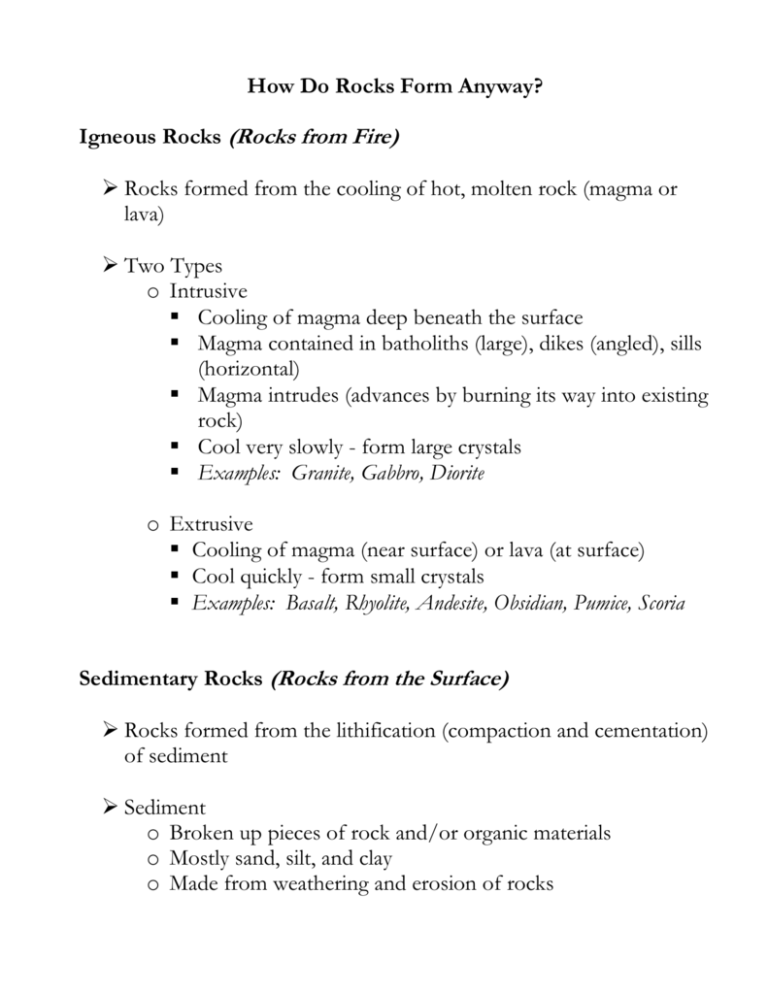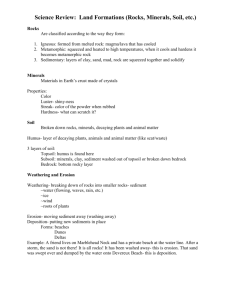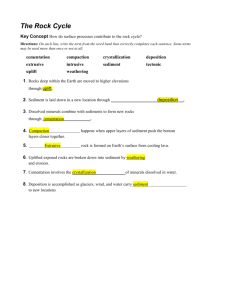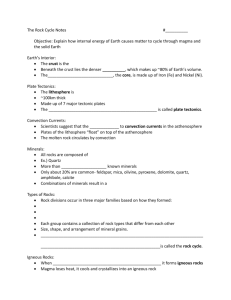Igneous Rocks
advertisement

How Do Rocks Form Anyway? Igneous Rocks (Rocks from Fire) Rocks formed from the cooling of hot, molten rock (magma or lava) Two Types o Intrusive Cooling of magma deep beneath the surface Magma contained in batholiths (large), dikes (angled), sills (horizontal) Magma intrudes (advances by burning its way into existing rock) Cool very slowly - form large crystals Examples: Granite, Gabbro, Diorite o Extrusive Cooling of magma (near surface) or lava (at surface) Cool quickly - form small crystals Examples: Basalt, Rhyolite, Andesite, Obsidian, Pumice, Scoria Sedimentary Rocks (Rocks from the Surface) Rocks formed from the lithification (compaction and cementation) of sediment Sediment o Broken up pieces of rock and/or organic materials o Mostly sand, silt, and clay o Made from weathering and erosion of rocks Compaction o As sediments are deposited and buried by layer upon layer o Force from above pushes sediment together Cementation o Water carries dissolved minerals thru sediment o Compaction forces water and air out and minerals are left behind as the cement Three Types o Clastic Rock fragments (any combo of size and shape) are compacted and cemented together (ex. conglomerate, breccia, sandstone) Can be formed from pressure only (ex. shale) o Chemical Minerals that were once dissolved in water Evaporation - water leaves minerals behind (ex. rock salt is left behind by water) Precipitation - minerals fall out of water due to temperature change in the water (ex. chert, compact limestone) Organic o Remains of once living things Ex. Coal from plants Ex. Fossiliferous limestone, coquina, and chalk from the shells of tiny marine animals Metamorphic Rocks (Rocks from Heat and Pressure) Metamorphosis - changing of one rock into another by heat, pressure, and/or chemical processes Minerals in rock change in size & shape and may form parallel bands or layers Two types o Contact Metamorphism due to rock coming into direct contact with magma o Regional Heat and pressure due to tectonic activity Most met. rocks are formed by regional metamorphism








